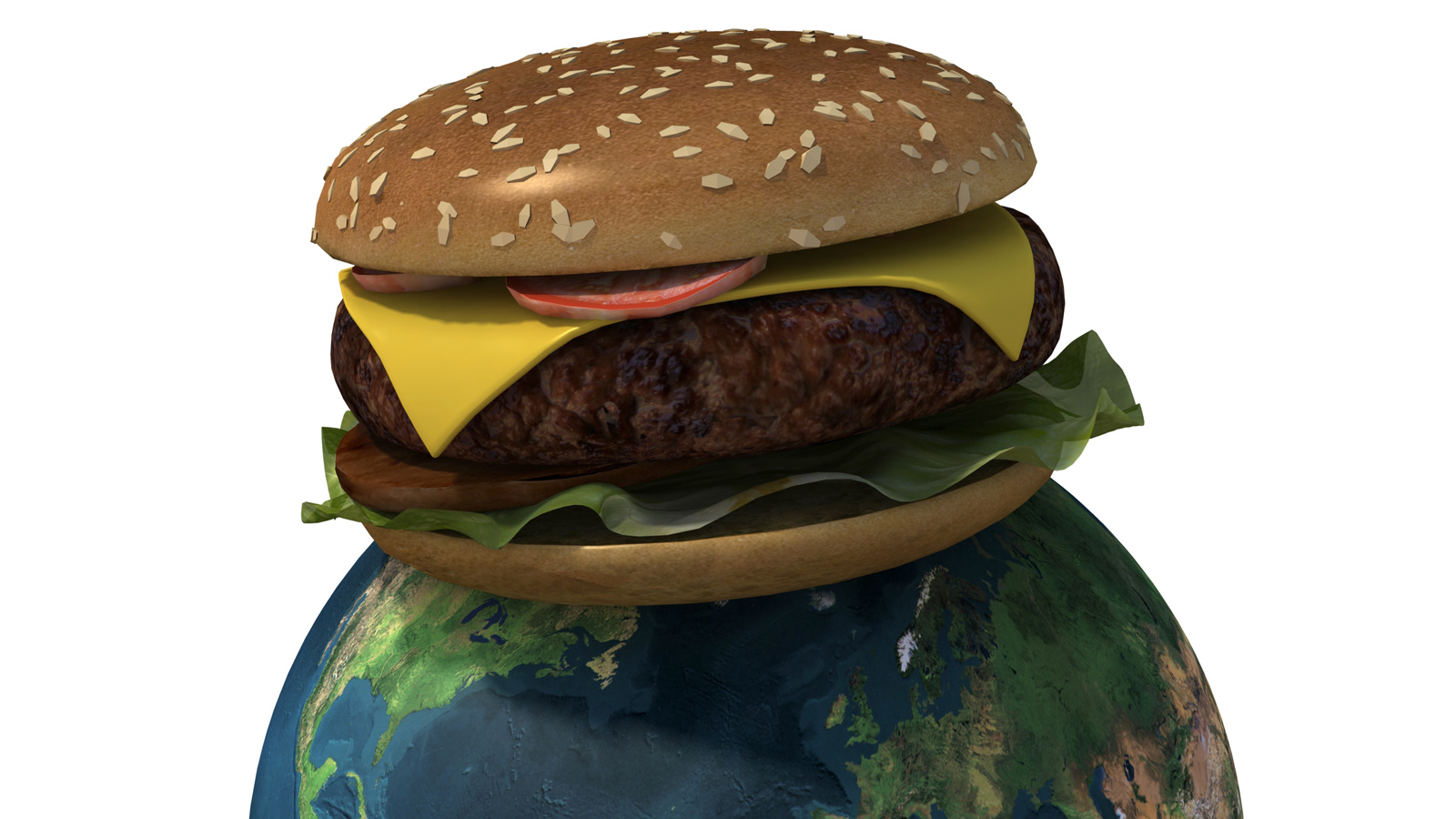Climate change and the planet work a lot like the ill-fated McD.L.T. cheeseburger, according to a study published in this week’s issue of Nature Climate Change.
What? You missed that sordid chapter in fast-food history? Let me explain. McDonald’s, in its infinite hubris, decided to construct a more perfect cheeseburger, so in 1985, using way too many periods and a technology known as “Excessive Styrofoam Packaging,” the company set out to “keep the hot side hot, and the cool side cool.”
It turns out the much ballyhooed pause in global warming may be working on the same principle: A new study by scientists with Australia’s University of New South Wales and the University of Hawaii suggests rapid surface warming in the Atlantic has kept Pacific surface temperatures cool by increasing the trade winds — thus slowing warming on land and generally throwing the whole climate out of whack.
Here’s more from the University of New South Wales:
New research has found rapid warming of the Atlantic Ocean, likely caused by global warming, has turbocharged Pacific Equatorial trade winds. Currently the winds are at a level never before seen on observed records, which extend back to the 1860s.
The increase in these winds has caused eastern tropical Pacific cooling, amplified the Californian drought, accelerated sea level rise three times faster than the global average in the Western Pacific and has slowed the rise of global average surface temperatures since 2001.
It may even be responsible for making El Niño events less common over the past decade due to its cooling impact on ocean surface temperatures in the eastern Pacific.
“We were surprised to find the main cause of the Pacific climate trends of the past 20 years had its origin in the Atlantic Ocean,” says co-lead author Dr. Shayne McGregor from the UNSW Climate Change Research Centre and ARC Centre of Excellence for Climate System Science (ARCCSS) at UNSW.
“It highlights how changes in the climate in one part of the world can have extensive impacts around the globe.”
Need a little more info? Here goes:
If these researchers are correct, warm Atlantic surface temperatures reduce atmospheric pressure, causing air to rise. These air pockets later sink over the Pacific, raising the atmospheric pressure there. The disparity in pressure has caused much stronger trade winds over the last two decades — which is great for sailing, but less great for things like living in the Western United States: The winds contribute to California’s devastating drought and out-of-control forest fires, and inhibit El Niño, which might otherwise come to the rescue.
The trade winds also cause rapid sea-level rise in the western Pacific and hold heat in the deep ocean, which may explain the “pause” — a lull in the rise of global surface temperatures in recent years.
Of course, climate science is complicated stuff, and others in the scientific community are not so sure that this study offers any final answers.
But if the theory holds, we’ll all be losing sleep, because like the McD.L.T., which collapsed under the weight of its ludicrously extravagant packaging and its inherent stupidity, this climate house of cards can’t stand forever. The authors of this latest study predict the pressure will eventually balance out — and when it does, the trade winds will slow, and the cool side will stop being cool in a hurry.
For a planet already boiling despite “the pause,” this isn’t sounding very appetizing.


